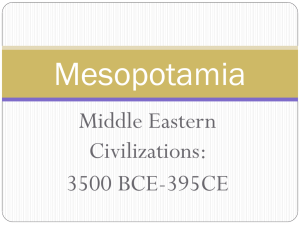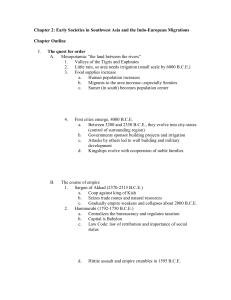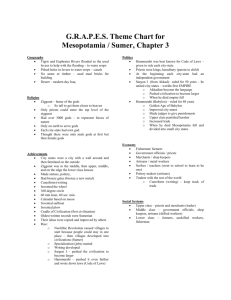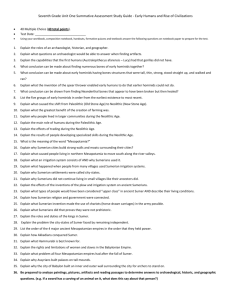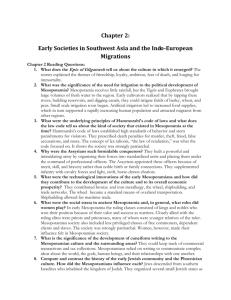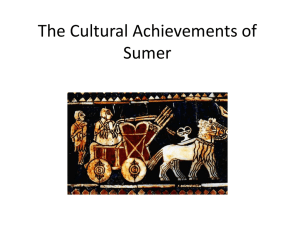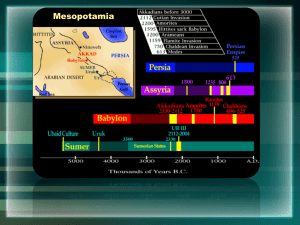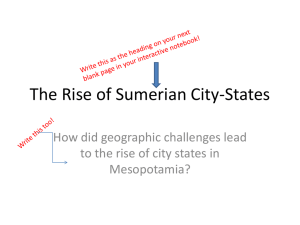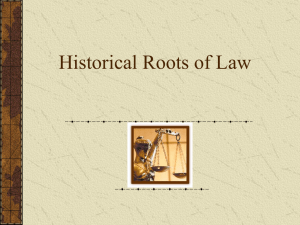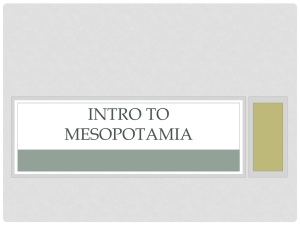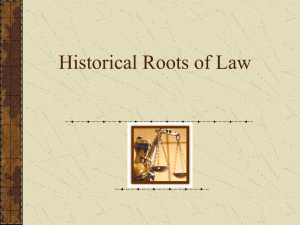Mesopotamia - Badantweb.com
advertisement
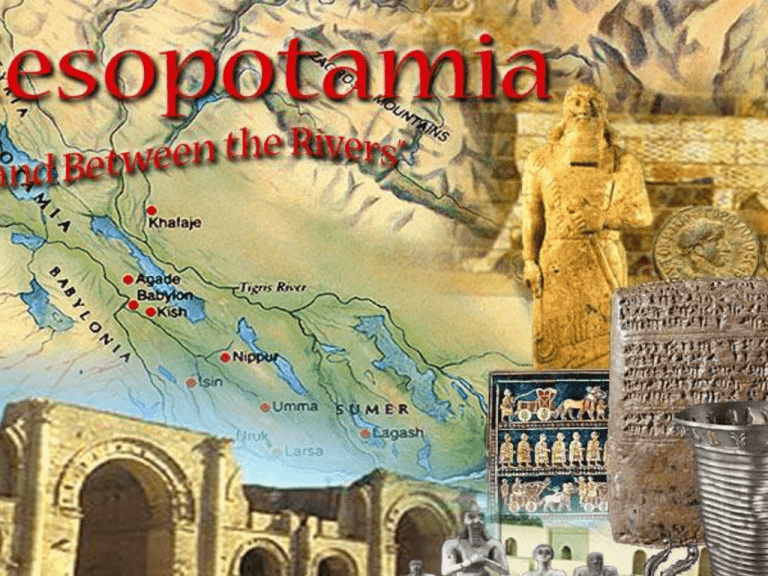
Sumer 3000 B.C.E. Political Structure of Sumer The priest-king: led the military, administered trade, judged disputes, and engaged in the most important religious ceremonies. ruled through a series of bureaucrats who surveyed land, assigned fields, and distributed crops after harvest. claimed authority was based on “divine selection.” claimed the monarch was divine and worthy of worship. Social Structure of Mesopotamia •The Emergence of a Stratified Patriarchal Society •Social Classes •Temple Communities •Slaves •Patriarchal Society •Women’s Roles Religion •Polytheistic •Powerful gods resembled humans. •Gods controlled natural forces and were associated with astronomical bodies, such as the sun. •The gods were creator gods; as a group, they had created the world and the people in it. •Believed gods regretted creation of humans and made a flood. Writing •Stone tablets kept records of goods. •Early writings were actually pictures done with a reed on wet clay. • Eventually, the Sumerians converted to a short-hand called cuneiform, or "wedgeshaped“ in Latin. The Calendar •Sumerians invented calendars, which they divided into twelve months based on the cycle of the moon. •This interest in measuring long periods of time led the Sumerians to develop a complicated knowledge of astronomy Economic Developments of Mesopotamia •Specialization and Trade •Bronze Metallurgy •Iron Metallurgy •The Wheel •Shipbuilding •Trade Networks MAP 2.2 Mesopotamian empires, 1800-600 B.C.E. Page: 39 The First Empire: The Akkadians •The Akkadians came from the Arabic peninsula •The Akkadians migrated north into the Sumerian city-states •In 2340 BC, the military leader, Sargon, conquered Sumer and built an empire •It was the largest empire humans great Akkadian had ever seen up until that point. •It later became the city of Babylon, which was the commercial and cultural center of the middle east for almost two thousand years. Hammurabi’s Code •Around 1900 B.C.E. the Amorites (Old Babylonians) gained control of most of Mesopotamian region. •A Babylonian monarch named Hammurabi came up with a system of laws. •a law of exact revenge or lex talionis: "an eye for an eye, a tooth for a tooth, a life for a life" •Sumerian law recognized class distinctions; under Sumerian law, everyone was not equal • Harming a priest or noble person was a far more serious crime than harming a slave or poor person Sources from the Past: Hammurabi’s Law on Family Relationships “If the wife of a seignior has been caught while lying with another man, they shall bind them and throw them into the water. If the husband of the woman wishes to spare his wife, then the king in turn may spare his subject.” - Hammurabi’s Law The Later Mesopotamian Empires: The Assyrians The Assyrians were Semitic people living in the northern reaches of Mesopotamia. The army was the largest standing army ever seen in the Middle East or Mediterranean. Technological innovation in weaponry: iron swords, lances, metal armor, and battering rams Later Influences in Religion The Early Hebrews Migrations and Settlement in Palestine Moses and Monotheism Assyrian and Babylonian Conquests The Early Jewish Community Hear the story. The Phoenicians The Phoenicians The Early Phoenicians Phoenician Trade Networks Alphabetic Writing Indo-European Migrations •The Hittites •War Chariots •Iron Metallurgy •Indo-European Migrations to the East •Indo-European Migrations to the South •Indo-European Migrations to the West


